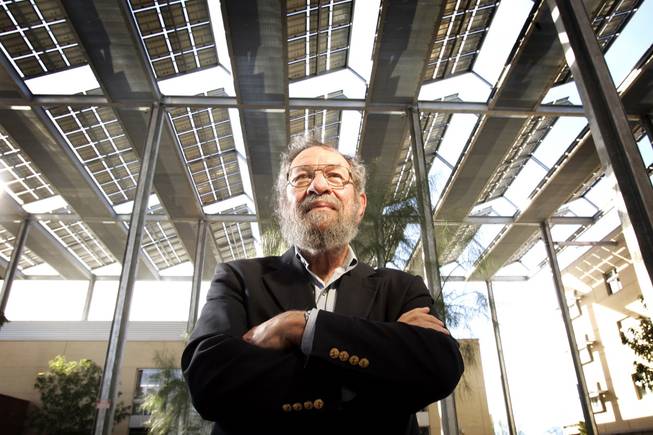
Alan Mallach, a senior fellow at the Brookings Institution in Washington, is shown Monday outside of UNLV’s Greenspun Hall.
Tuesday, Oct. 26, 2010 | 2 a.m.
Sun Archives
Beyond the Sun
Alan Mallach is a senior fellow with the Brookings Institution in Washington, and a visiting scholar at the Federal Reserve Bank of Philadelphia who specializes in housing policy and urban planning. He’ll give a free lecture at 5:30 today at Greenspun Hall at UNLV about the long-term effect of the foreclosure crisis in American housing.
What are you going to address in your lecture?
The question I’ll try to answer is what is going to happen long term to housing? Is this a blip, or a reset? My hypothesis is that this is a very major reset, and that for 10 years we’ll see low prices, low demand, low new construction. In the meantime, this is a good opportunity to take stock of what our housing policy is and what we should be doing.
And what should we be doing?
We need to take a serious step back from sprawl. In the early part of the last decade, we had this fantasy that we could have it all. That we could have redevelopment in our cities, development out on the outer rings, growth in the Sun Belt, growth in the older parts of the country.
Why was that a problem?
Nationwide we wound up building 7 million more housing units than occupied housing units. We don’t need that volume of housing stock. It’s wasteful. It’s environmentally unsustainable, and it diverts resources away from investments that would help us rebuild our economy.
What about the situation locally?
Clearly Las Vegas was overextended. What we’ve seen for four years, some would argue is a blip, and that in a year or two you’ll absorb oversupply. The other possibility is that it’s not a blip, and that it reflects a continued long-term slowdown, in which case there could be a lot of difficulties ahead. It’s not like Detroit, which has wide swaths of abandonment, but there are some areas that will be progressively less desirable, and then there’s the risk of long-term abandonment.
So what should we do?
There’s surprisingly lots of vacant land close to the Strip, and close to major economic anchors. The city and county should look at this vacant land and determine how it could be used to make a stronger community, and then create incentives and a tax and regulatory structure to encourage development there. It should be relatively close in, and at least medium density. Start filling in some of those holes.
Why do you recommend that kind of infill development?
It’s more efficient in terms of energy use. And I hear many people say Las Vegas needs to diversify its economy. To do that, you need a more sophisticated workforce. To attract those kinds of workers, you need a more diverse building pattern that includes more interesting, walkable neighborhoods.

Join the Discussion:
Check this out for a full explanation of our conversion to the LiveFyre commenting system and instructions on how to sign up for an account.
Full comments policy